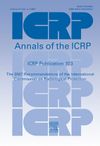Categories of exposure and exposure situations are used to consider how best to approach radiological protection in different circumstances.
Exposure Categories are: occupational, public, and medical.
Exposure Situations are: planned, existing, and emergency.
Categories and Situations are considered together to help guide the best approach to radiological protection in a particular circumstance.
|
|

Occupational Exposure
Exposure of workers incurred as a result of their work
|

Public Exposure
Exposure of members of the public other than occupational and medical exposures, and not including the normal local natural background radiation
|

Medical Exposure
Exposure of patients as part of their diagnosis or treatment, volunteers helping in the support and comfort of patients, and volunteers in biomedical research
|

Planned Exposure Situation
Situations where radiological protection can be planned in advance, and exposures can be reasonably predicted
|
e.g. working in a hospital, uranium mine, or nuclear power plant
|
e.g. visiting a hospital, living near a nuclear power plant
|
e.g. getting an x-ray, CT scan, or radiation treatment
|

Existing Exposure Situation
Situations that already exist when a decision on control has to be taken
|
e.g. aircrew and astronauts exposed to cosmic radiation
|
e.g. radon gas in the home
|
n/a
|

Emergency Exposure Situation
Unexpected situations that may require urgent protective actions
|
e.g. in the immediate response to an accident
|
e.g. during a major accident
|
n/a
|
Quotes from ICRP Publications
Occupational Exposures: Publication 103 paragraph 178
Occupational exposure is defined by the Commission as all radiation exposure of workers incurred as a result of their work. The Commission has noted the conventional definition of occupational exposure to any hazardous agent as including all exposures at work, regardless of their source. However, because of the ubiquity of radiation, the direct application of this definition to radiation would mean that all workers should be subject to a regime of radiological protection. The Commission therefore limits its use of ‘occupational exposures’ to radiation exposures incurred at work as a result of situations that can reasonably be regarded as being the responsibility of the operating management...
Medical Exposures: Publication 103 paragraph 322
Medical exposures are predominantly delivered to individuals (patients) undergoing diagnostic examinations, interventional procedures, or radiation therapy. Other individuals caring for and comforting patients are also exposed to radiation. These individuals include parents and others, normally family or close friends, who hold children during diagnostic procedures or may come close to patients following the administration of radiopharmaceuticals or during brachytherapy. Exposure to members of the general public from released patients also occurs, but this exposure is almost always very small. In addition, volunteers in biomedical research often undergo medical procedures involving radiation exposure that are similar to procedures performed on patients. Medical exposure refers to all these types of exposures ...
- The exposure of individuals for diagnostic, interventional, and therapeutic purposes, including exposure of the embryo/fetus or infant during medical exposure of patients who are pregnant or breast-feeding;
- Exposures (other than occupational) incurred knowingly and willingly by individuals such as family and close friends helping either in hospital or at home in the support and comfort of patients undergoing diagnosis or treatment;
- Exposures incurred by volunteers as part of a programme of biomedical research that provides no direct benefit to the volunteers
Public Exposures: Publication 103 paragraph 180
Public exposure encompasses all exposures of the public other than occupational exposures and medical exposures ... The component of public exposure due to natural sources is by far the largest, but this provides no justification for reducing the attention paid to smaller, but more readily controllable, exposures to man-made sources. Exposures of the embryo and fetus of pregnant workers are considered and regulated as public exposures.
|
Planned Exposure Situations: Publication 103 paragraph 253
Planned exposure situations are where radiological protection can be planned in advance, before exposures occur, and where the magnitude and extent of the exposures can be reasonably predicted. The term encompasses sources and situations that have been appropriately managed within the Commission’s previous recommendations for practices. In introducing a planned exposure situation all aspects relevant to radiological protection should be considered. These aspects will include, as appropriate, design, construction, operation, decommissioning, waste management, and rehabilitation of previously occupied land and installations, and will take account of potential exposures as well as normal exposures. Planned exposure situations also include the medical exposure of patients, including their comforters and carers. The principles of protection for planned situations also apply to planned work in connection with existing and emergency exposure situations, once the emergency has been brought under control ...
Existing Exposure Situations: Publication 103 paragraph 284
Existing exposure situations are those that already exist when a decision on control has to be taken. There are many types of existing exposure situations that may cause exposures high enough to warrant radiological protective actions, or at least their consideration. Radon in dwellings or the workplace, and naturally occurring radioactive material (NORM) are well-known examples. It may also be necessary to take radiological protection decisions concerning existing man-made exposure situations such as residues in the environment resulting from radiological emissions from operations that were not conducted within the Commission’s system of protection, or contaminated land resulting from an accident or a radiological event. There are also existing exposure situations for which it will be obvious that action to reduce exposures is not warranted. The decision as to what components of existing exposure are not amenable to control requires a judgement by the regulatory authority that will depend on the controllability of the source or exposure, and also on the prevailing economic, societal, and cultural circumstances ...
Emergency Exposure Situations: Publication 103 paragraph 180
Even if all reasonable steps have been taken during the design stage to reduce the probability and consequences of potential exposures, such exposures may need to be considered in relation to emergency preparedness and response. Emergency exposure situations are unexpected situations that may require urgent protective actions, and perhaps also longer-term protective actions, to be implemented. Exposure of members of the public or of workers, as well as environmental contamination can occur in these situations. Exposures can be complex in the sense that they may result from several independent pathways, perhaps acting simultaneously. Furthermore, radiological hazards may be accompanied by other hazards (chemical, physical, etc.). Response actions should be planned because potential emergency exposure situations can be assessed in advance, to a greater or lesser accuracy depending upon the type of installation or situation being considered. However, because actual emergency exposure situations are inherently unpredictable, the exact nature of necessary protection measures cannot be known in advance but must flexibly evolve to meet actual circumstances ...
|
 Read on to learn about Radiation Dose
Read on to learn about Radiation Dose
See Also

